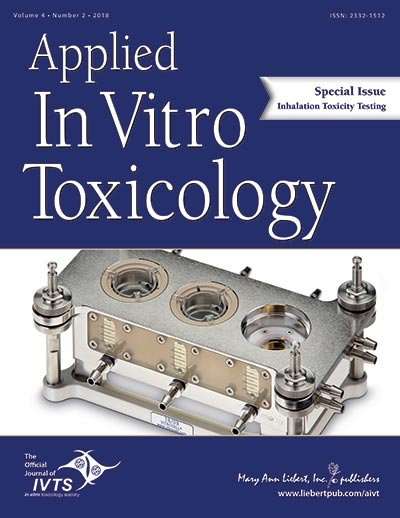Novel in vitro approaches for toxicity testing of inhaled substances

Integrated approaches that avoid the use of animals to assess the toxicity of inhaled materials may include a computational model to screen for chemical reactivity, a human tissue-based assay to predict the absorption of a chemical into the respiratory tract, and other types of advanced systems based on in vitro and in vivo respiratory biology. A comprehensive review of the progress and ongoing efforts in this fascinating field is the focus of a new special issue on Inhalation Toxicity Testing published in Applied In Vitro Toxicology. The issue is available free on the Applied In Vitro Toxicology website.
The special issue on Inhalation Toxicity Testing is led by Guest Editor Amy Clippinger, Ph.D., Director of the PETA International Science Consortium Ltd.
"The articles in this special issue describe research to develop and apply human-relevant in silico and in vitro approaches that incorporate cutting-edge science and don't use animals," says Dr. Clippinger.
In the article "Profiling Acute Oral and Inhalation Toxicity Data Using a Computational Workflow to Screen for Facile Chemical Reactivity," Dan Wilson, Ph.D., and coauthors from The Dow Chemical Company (Midland, MI) describe the computational approaches they are developing to screen for inhalation toxicity based on classes of chemically reactive compounds.
Wiebke Hoffmann, The European Union Reference Laboratory for Alternatives to Animal Testing (Ispra, Italy) and colleagues from University of Vienna (Austria), University of Lausanne (Geneva, Switzerland), Douglas Connect (Basel, Switzerland), and Epithelix Sarl (Geneva) describe their ability to study pulmonary absorption in vitro in the article entitled "Establishment of a Human 3-D Tissue-Based Assay for Upper Respiratory Tract Absorption ."
In "Prevalidation of an Acute Inhalation Toxicity Test Using the EpiAirway In Vitro Human Airway Model," George Jackson et al., MatTek Corp. (Ashland, MA) present the results of prevalidation studies using EpiAirway tissues, which are exposed to test chemicals for 3 hours before being assessed for tissue viability.
Also included in the special issue is the Roundtable Discussion "Nonanimal Approaches to Assessing the Toxicity of Inhaled Substances: Current Progress and Future Promise." Dr. Clippinger leads the expert participants from industry, academia, government agencies, and non-profit organizations in a lively discussion on topics including the breadth of nonanimal approaches, their advantages and limitations versus animal inhalation tests, and how to move forward.
"I am pleased with this special issue of Applied In Vitro Toxicology as it focuses on an area of great importance for risk assessment, which has been a challenge to address using in vitro methods. This issue does a wonderful job demonstrating how in vitro methods can be successfully used to understand inhalation toxicology," says Jim McKim, Ph.D., Editor-in-Chief of Applied In Vitro Toxicology and Founder and CEO, IonTox, LLC.
More information: Dan Wilson et al, Profiling Acute Oral and Inhalation Toxicity Data Using a Computational Workflow to Screen for Facile Chemical Reactivity, Applied In Vitro Toxicology (2018). DOI: 10.1089/aivt.2017.0041




















